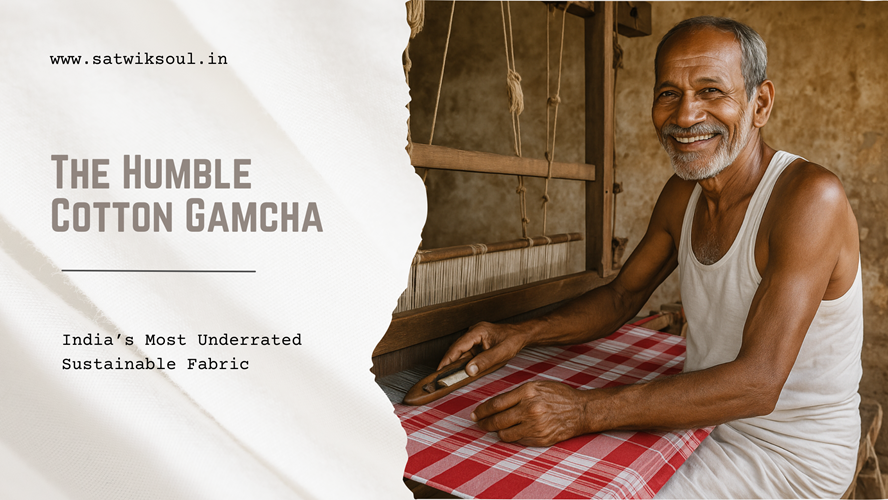In the heart of India’s villages and towns, you’ll often spot a checkered piece of cloth resting on a shoulder, wrapped around a head, or drying on a bamboo fence in the sun. That piece of cloth is the gamcha—a handwoven cotton fabric that carries centuries of culture, simplicity, and sustainability in its threads.
While often overlooked or dismissed as a poor man’s towel, the gamcha is quietly making a comeback—as a symbol of conscious living, slow fashion, and sustainable tradition.
🧶 A Cultural Icon With Deep Roots
Gamchas have been part of Indian daily life for generations. The word “gamcha” comes from Bengali and literally means “something to wipe the body with.” But this humble cloth is so much more than that. From Assam to Odisha, Uttar Pradesh to West Bengal, every region has its own variation of the gamcha, often distinguished by its weave, color palette, and local motifs.
In rural homes, gamchas are part of identity—used for everything from wiping sweat to offering guests a seat, from protecting crops to wrapping newborns. It’s a fabric that lives and breathes with the people.
🧵 The Handloom Touch: Art in Every Thread
Most gamchas fabric are still made by hand on traditional looms. They are crafted from 100% cotton yarns, often dyed with natural or azo-free colors. The handloom process means each gamcha supports a network of artisans who carry forward this knowledge, usually passed down through generations.
The irregularities in the weave, the slight variations in size or pattern—these aren’t flaws. They’re the signature of human hands, not machines.
By buying a handloom gamcha, you’re not just purchasing fabric. You’re investing in livelihoods, preserving traditional skills, and taking a stand against fast fashion.
🌱 An Eco-Warrior in Disguise
When we speak of sustainable living, the gamcha is an unsung hero. Made from biodegradable cotton, dyed naturally, and requiring minimal water or chemical processing, it stands in stark contrast to synthetic textiles that pollute oceans and clog landfills.
Gamchas are lightweight, quick-drying, and long-lasting. They don’t release microplastics. They don’t need fancy care routines. And when their life is done, they return to the earth without harm.
In a world drowning in polyester and packaged luxury, the gamcha is refreshingly humble—and refreshingly kind to the planet.
✨ From Fields to Fashion
Interestingly, the gamcha has started to attract designers and sustainable fashion brands. You’ll now find it reimagined as stoles, kurtas, cushion covers, table runners, and even bags. Its rustic charm and breathable texture lend themselves beautifully to modern minimalism.
Still, no reinvention can surpass the simple beauty of a gamcha worn traditionally—slung over a shoulder, wrapped around the head, or tied as a makeshift sling. In each of these forms, it tells a story of resilience, comfort, and quiet pride.
💚 Make the Switch: Choose Conscious Fabric
Embracing the gamcha isn’t about nostalgia. It’s about returning to what’s real. In a time when sustainability has become a buzzword, the gamcha is a living example of how simplicity, functionality, and environmental consciousness can beautifully co-exist.
So the next time you’re tempted to pick up a towel, a scarf, or a wrap—pause. Reach instead for a gamcha. Let it be your towel, your yoga mat cover, your travel companion, or even your daily ritual of rootedness.
Let the fabric of India touch your soul!

